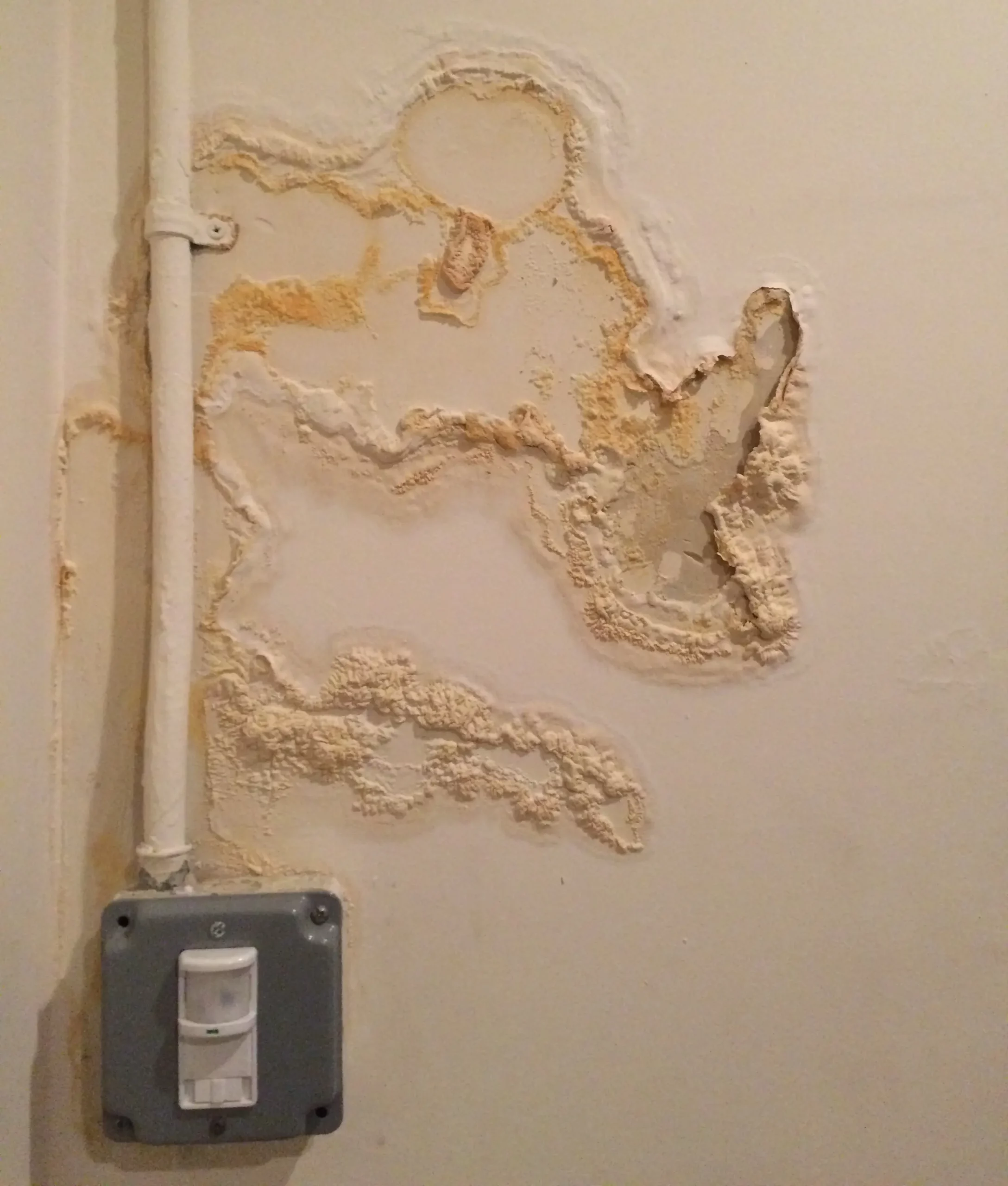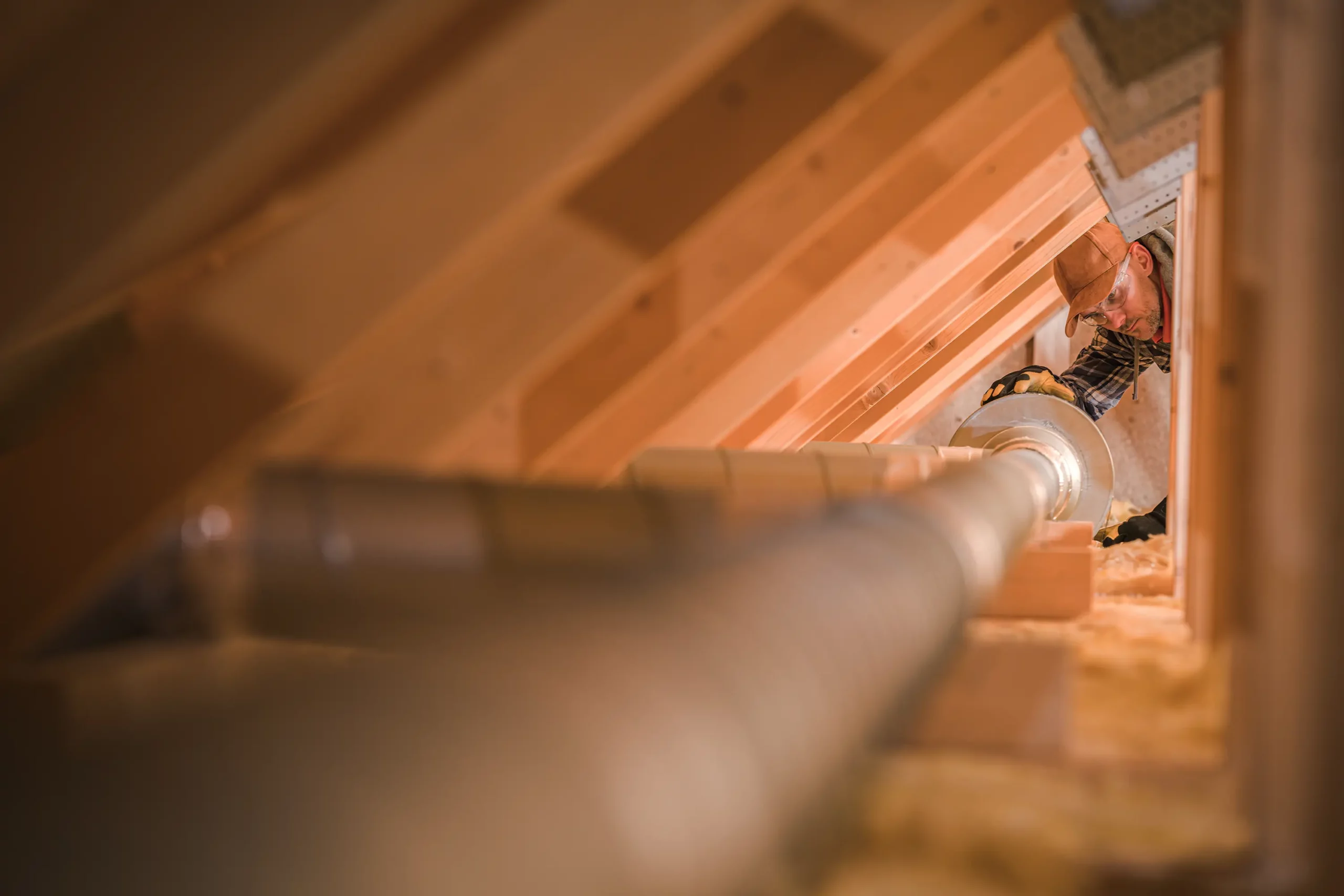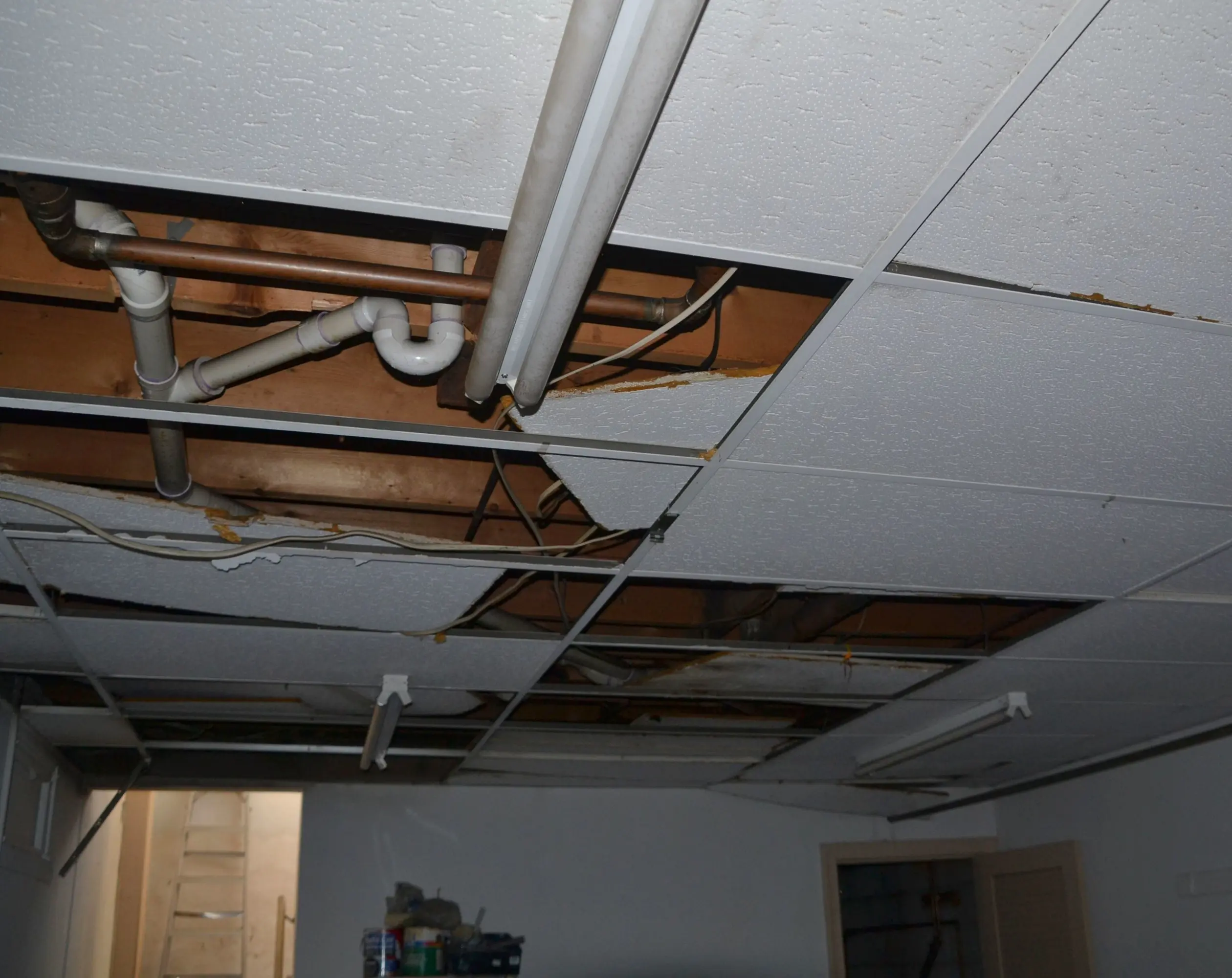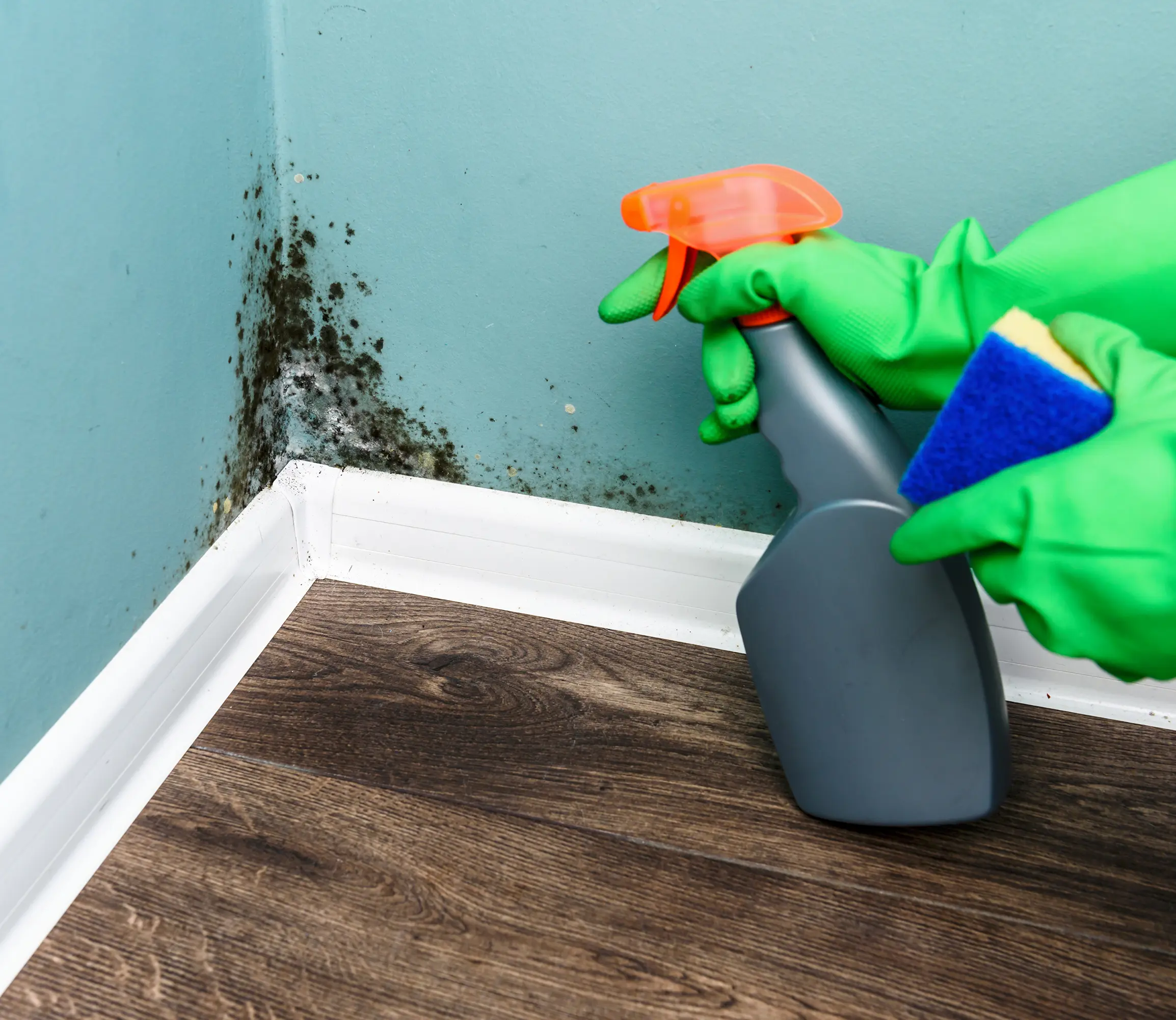Natural disasters, such as hurricanes and flash floods, and heavy rain fall, can inundate homes with water, leading to prolonged moisture exposure in materials like wood and drywall. The aftermath often can cause compromised electricity, hampering the drying process and enabling mold to thrive. Moreover, these events can damage structural components, creating more avenues for moisture entry during subsequent rainfalls. Additionally, the introduced water might be contaminated, further accelerating mold growth. Undetected pockets of moisture in hidden home areas, like crawl spaces or wall cavities, present added challenges, as they can remain overlooked while being prime spots for mold formation. Post-disaster, rapid remediation and moisture assessments are paramount to prevent mold issues.
Plumbing mishaps, such as ruptured pipes or malfunctioning appliances, introduce unwarranted moisture into homes. A burst pipe can suddenly flood rooms, while dripping faucets or faulty water heaters might lead to stealthier, gradual water accumulation. This moisture, whether sudden or slow, interacts with porous household materials like wood, carpet, or drywall, creating an ideal haven for mold. As these materials retain water, they provide mold spores—naturally present in the air—a perfect breeding ground to grow and flourish. Often, the less overt water issues, like a slight leak behind an appliance or beneath a sink, can be especially treacherous as they might go unnoticed until mold visibly manifests or health symptoms arise.
Roof damage, from cracked tiles to deteriorating shingles, acts as an inadvertent invitation for external elements, especially rainwater, to penetrate a home's protective barrier. When the roof's integrity is compromised, even a light drizzle can exploit these vulnerabilities, allowing moisture to trickle into the attic, wall cavities, or ceiling spaces. This insidious infiltration often goes unnoticed, with the dampness silently setting into insulation, wooden beams, or drywall. As these materials remain damp, they create a hospitable environment for mold spores, omnipresent in our surroundings, to anchor, multiply, and colonize, turning seemingly minor roof damages into significant mold challenges within the household's interiors.
The foundation is a home's bedrock, but as cracks emerge over time, it becomes susceptible to water intrusion. These fissures, often a result of natural settling or external pressures, can act as gateways for groundwater or runoff, particularly when the home's drainage system fails to redirect water efficiently. Once inside, this moisture can wick up walls, spread under flooring, or create damp pockets in basements and crawl spaces. The consistent presence of this moisture, combined with organic materials found in many homes, provides an optimal environment for mold to take root and flourish. Left unchecked, what begins as minor foundational flaws can evolve into extensive mold-related concerns that jeopardize indoor air quality and health.
Inadequate drainage, be it due to clogged gutters, obstructed downspouts, or poorly designed landscaping, poses more than just an aesthetic concern. When water isn't effectively channeled away from the home, it accumulates around the foundation, leading to saturation of the soil and increasing the hydrostatic pressure. This built-up moisture can then seep into basements, crawl spaces, or even the lower walls of the house. Inside, the persistent dampness coupled with the home's organic materials, creates a conducive environment for mold growth. The steady, unseen encroachment of moisture due to drainage mishaps can stealthily escalate into a full-blown mold infestation, compromising both the home's structure and its inhabitants' health.
Sewer backups, a homeowner's nightmare, are more than just foul-smelling intrusions. When sewers become blocked or malfunction, the resultant overflow introduces sewage water into the living spaces, carrying with it a deluge of contaminants and moisture. Beyond the immediate and obvious water damage, this influx creates a humid environment rich in organic material—prime conditions for mold growth. As the dampness seeps into walls, floors, and furnishings, mold finds ample nourishment to thrive. The presence of sewage not only accelerates mold colonization but adds an extra layer of health concerns, as both mold and sewage-borne pathogens pose risks to respiratory and overall well-being.
Windows and doors, designed as barriers between the home's interior and the external environment, can become weak points over time or due to improper sealing. Aging seals, deteriorated weather stripping, or simple wear and tear can allow for the ingress of rainwater, especially during intense weather events like storms. This moisture intrusion, often subtle and undetected, can accumulate on window sills, seep into adjacent walls, or pool around door frames. Such consistently damp areas become fertile ground for mold spores, present in the ambient air, to latch onto and proliferate. This means that even the smallest of leaks in windows or doors can, over time, transform into sprawling mold colonies that impact both home integrity and indoor air quality.
Sump pumps, vital in homes with basements, act as a bulwark against rising groundwater or flooding. However, when they malfunction, either due to mechanical issues or power outages, their protective role is compromised. The subsequent inability to expel accumulating water can lead to pools forming in the basement, a space already predisposed to dampness due to its subterranean nature. This persistent wet environment, combined with the basement's often cooler temperatures and limited ventilation, creates an ideal sanctuary for mold to take root and spread. As the moisture is absorbed by walls, flooring, or stored items, mold finds a hospitable and continuous source of nourishment, escalating a simple equipment failure into a complex microbial challenge.
Homes nestled near rivers, lakes, or oceanfronts enjoy scenic beauty but also bear the brunt of their proximity during adverse conditions. When these water bodies overflow, often due to intense rainfall, storm surges, or melting snow, the adjacent areas, including residential zones, become vulnerable to inundation. This unexpected deluge can seep into homes, saturating foundations, walls, and interiors. The lingering dampness, if not promptly and thoroughly addressed, creates an environment ripe for mold growth. As the water recedes, it often leaves behind both visible and hidden pockets of moisture. These moist pockets, especially in conjunction with organic materials found in homes, offer mold spores the ideal conditions to germinate and proliferate, turning a natural overflow event into a prolonged mold remediation ordeal.
In the intricate dance of daily life, human oversights, such as an inadvertently left-open tap or an overfilled bathtub, can usher in unintended water disasters. These seemingly minor lapses can lead to significant water spillage, soaking carpets, seeping into floorboards, or trickling down to lower levels of a home. While the immediate aftermath might only appear as a puddle or damp spot, the residual moisture, if not thoroughly dried, becomes a fertile breeding ground for mold. The organic materials commonly found in homes, like wood or carpet fibers, when dampened, offer mold spores an ideal habitat to latch onto and multiply. Thus, a momentary lapse in attention can subtly set the stage for a pervasive mold issue, highlighting the interconnectedness of human actions and home health.





